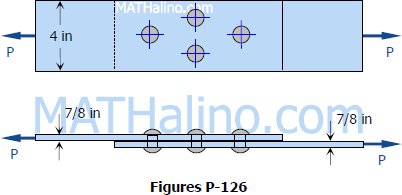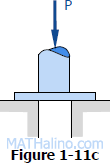240 How to locate the centroid of metal plate with circular hole
Problem 240
The shaded area in Fig P-240 represents a steel plate of uniform thickness. A hole of 4-in. diameter has been cut in the plate. Locate the center of gravity the plate. Hint: The weight of the plate is equivalent to the weight of the original plate minus the weight of material cut away. Represent the original plate weight of plate by a downward force acting at the center of the 10 × 14 in. rectangle. Represent the weight of the material cut away by an upward force acting at the center of the circle. Locate the position of the resultant of these two forces with respect to the left edge and bottom of the plate.



